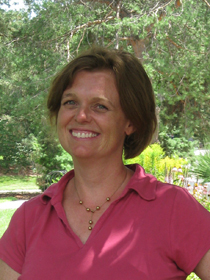
Farmers are front-line land management decision makers. They think about commodity prices, input prices, the weather, and much more in deciding how best to use land. But climate? Maybe, maybe not.
Yet the climate – the pattern of interactions between air, water, land, and living systems that manifest each day as weather – affects farmers’ success, and farmers’ decisions in turn affect the greenhouse gases that contribute to climate change, researchers say.
Researchers at the National Drought Mitigation Center and others from the University of Nebraska-Lincoln have teamed up with Purdue University in a multi-institution project to learn how to make climate information useful to farmers and to the people who advise farmers.
Useful to Usable (U2U): Transforming Climate Variability and Change Information for Cereal Crop Producers, funded by the U.S. Department of Agriculture, is a project designed to improve the resilience and profitability of U.S. farms in the Corn Belt in a changing climate. The team of 50-plus researchers includes experts in applied climatology, crop modeling, agronomy, information technology, agricultural economics and other social sciences.
Tonya Haigh, a rural sociologist at the NDMC, and Cody Knutson, leader of the NDMC’s Planning and Social Sciences program area, played key roles in designing surveys taken by almost 5,000 Corn Belt farmers and 2,080 technical advisors, and they led focus groups in Nebraska for the project. They are both co-authors of published articles based on the surveys.
As the research team observes in an article in Climate Change Letters, agriculture is both vulnerable to global climate change and a significant source of the greenhouse gases that are driving climatic shifts.
Haigh emphasized the need to distinguish between farmers and the various professionals who advise them, and to target information for specific decisions.
"We've learned that farmers and farm advisers may use information very differently and have differing levels of interest in the details and levels of science," she said. "There's an investment that has to happen in order to understand and use climate information. We want to target the information to the people who have the motivation to invest."
What have they learned so far?
Regardless of their beliefs about climate change, farmers are concerned about drought, high temperatures and damaging precipitation. Two-thirds of farmers said farmers should take steps to protect land from increased weather variability, but only 23 percent of farmers thought that the government or farmers should do more to reduce greenhouse gases.
Fortunately, as the researchers observed, many practices that protect land from weather variability also reduce greenhouse gas emissions, so it makes sense to promote these dual-purpose practices.
Advisers – including government, non-profit, for-profit and Extension employees – also agree that changing practices to cope with increasing climate variability is important, but are not very confident in their ability to incorporate weather and climate information in their advice. As a group, they were less influenced by historical weather information or longer-term climate outlooks than they were by current weather or short-term forecasts.
The researchers saw opportunities for providing advisers with education and better tools to fill in current knowledge gaps and help their clients and customers adapt to a variable climate.
Others at UNL's School of Natural Resources involved in different aspects of the project are Martha Shulski, director of the High Plains Regional Climate Center, and Tapan Pathak, Extension Educator in Climate Variability.
"One outcome of the U2U project will be a suite of climate-based decision tools that will help, to start with, Corn Belt farmers deal with climate variability," Haigh said. "Our hope is that these tools will get used because of what we've learned about the specific information crop advisers want, and when they want it."
Follow U2U's progress at http://AgClimate4U.org
References:
Prokopy, L.S., T. Haigh, A.S. Mase, J. Angel, C. Hart, C. Knutson, M.C. Lemos, Y.J. Lo, J. McGuire, L.W. Morton, J. Perron, D. Todey, and M. Widhalm. 2013. Agricultural Advisors: A Receptive Audience for Weather and Climate Information? Weather, Climate, and Society. 5:162-167.
Arbuckle, J., L. Prokopy, T. Haigh, J. Hobs, T. Knoot, C. Knutson, A. Loy, A. Mase, J. McGuire, L. Morton, J. Tyndall, M. Widhalm. 2013. Climate change beliefs, concerns, and attitudes toward adaptation and mitigation among farmers in the Midwestern United States. Climatic Change Letters, 117(4):943-950.